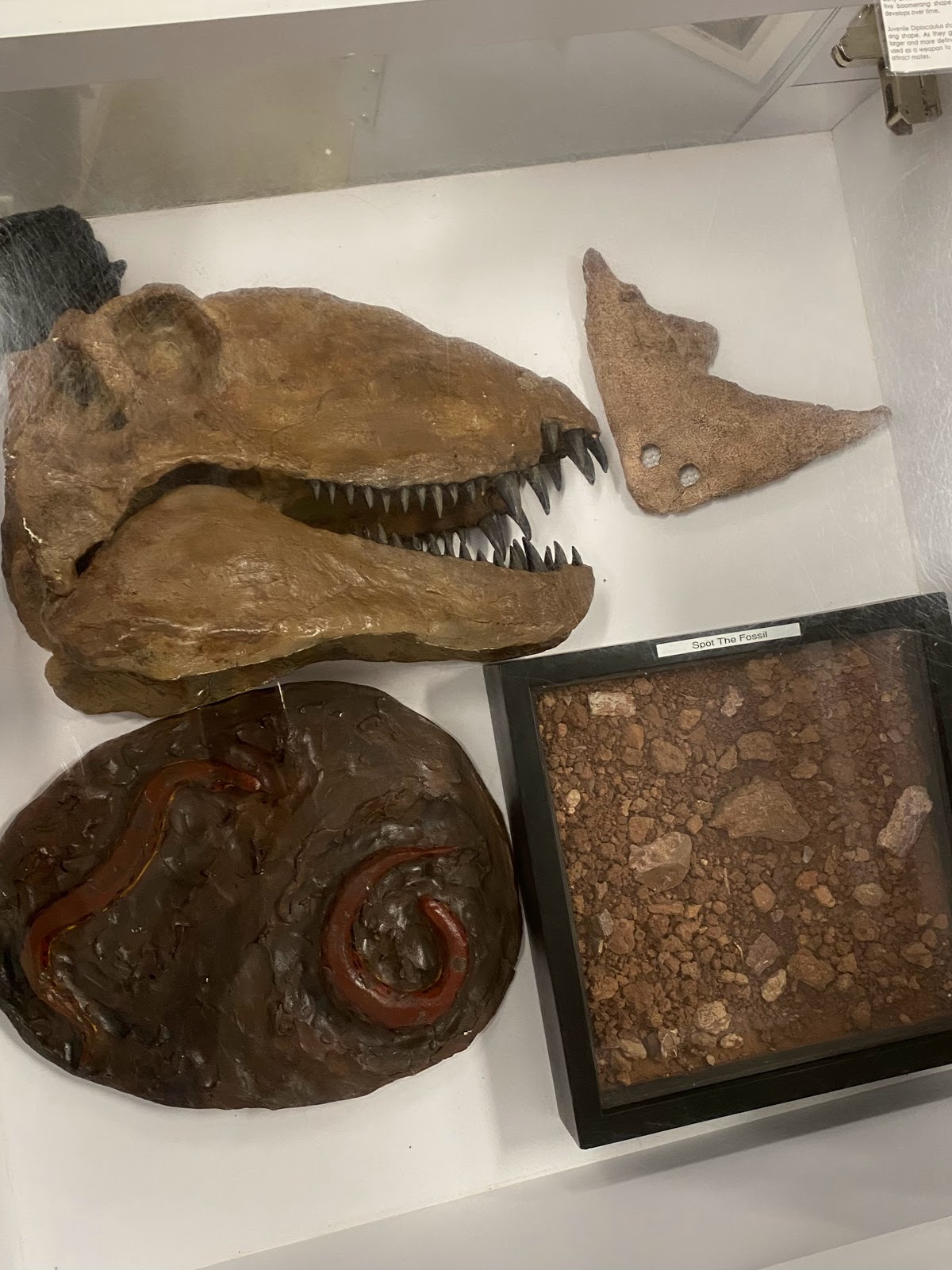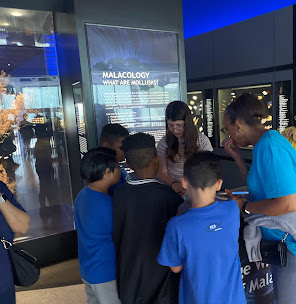Day 7: Independent Work
Today, I got to work on my end product throughout most of the time at the museum, which was a nice change from the usual activeness during more crowded days. Also, as Ms. Leap had to leave early today, I had a chance to work a little more on my own, which also went smoothly.
To sum it up again, my end product for this independent study will be an overview of the malacology touch-cart, including some information on the specimens, and some examples of how a docent could structure a presentation. I've seen some of the other touch carts around the museum, most of them from the paleo hall, and they all have a flexible outline someone can use to practice with before presenting. Since the malacology one does not, I think it would be beneficial both to me and future volunteers.
One of the first things I set to doing was taking note of the specimens this cart had. I plan to give some basic information on what they are, and divide them according to class. Out of the eight classes of mollusks, this cart only has the three main ones. This makes it much easier to divide the many specimens in a sensical order. So, for that, I took some pictures of all of the containers, as they all had labels to help with tidying up after use.
Since I also want to give some pointers on how to structure a presentation, I thought back to how my own presentation on Friday went. From what I experienced, a presentation can take one of two possible directions: the short version, or the long version.
Obviously, this largely depends on who your audience is. If it is young children, they will marginally prefer a more physical approach to the specimens you've laid out. But, it is still a good idea to have a more elaborate explanation in mind, as adults will ask questions and give you a chance to dive into your learning.
In terms of how you can structure the presentation, what I had in mind was in terms of classes. I think it is a great way to start dividing into your specimens and research. Also, the viewers can continue learning about what you've talked about once they go through the rest of the exhibit hall. Once the classes are explained to the audience, that can be a good stepping-point for showing them a few examples of each of the classes. This is something that I did during my own presentation, and, in my opinion, made the transition from specimen to specimen more smooth and understandable.
All in all, with how many ways you can go about presenting, having a vague idea of where to start is really beneficial, especially when facing such a varied audience. I hope that, in the end, my final product will benefit future volunteers or staff in structuring a fun display!
Other than that, today was mostly research so I do not have any interesting pictures to share for today...but I did take a picture of the diplocaulus fossil since I forgot to yesterday:

That's all from today, I look forward to a busy day tomorrow. Hopefully I'll have more hands-on experience to share, and I guarantee you there'll be more pictures..! To tomorrow.



Comments
Post a Comment